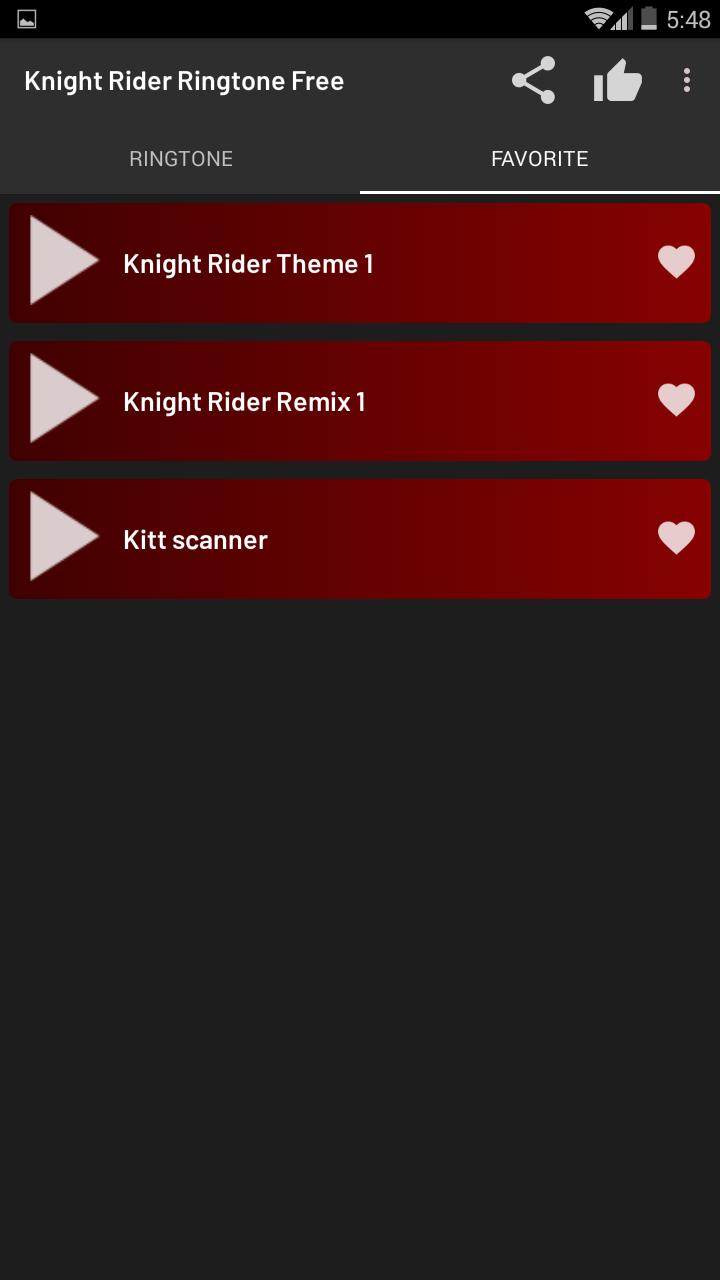Everyone loved Knight Rider. I want to see more KITT scanners in the world.
The one and only Knight Rider's voice box and Speedometer for Android is finally here. This app imitates the Knight Rider series talking car voice box and Speedometer from series season 1. Currently there are two language versions included in app: English and Italian, you can change language version in. Software Description: The Knight Rider: KITT Scanner screensaver, available for both Microsoft Windows and Apple Mac OS X, features the hood and scanner light of the advanced KITT car that starred in the popular 1980s television series Knight Rider, created by Glen A. The screensaver shows the black hood of the car, with the red scanner animated in the middle. DOWNLOADS Knight Rider. Sooo, a little scanner via Photoshop and, the future of Knight Rider! Audio: MUSIC Knight Rider Theme mp3 (no narration) Knight Rider Theme mp3 (with narration) SOUND Effects K.I.T.T. Scanner Sweep wav Turbo Boost wav. Don't touch turbo boost!
- 19,424 views
- 11 comments
- 37 respects
Components and supplies
Apps and online services
|
About this project
KITT Scanner
Something that since childhood have fascinated me, is Knight Rider and the KITT scanner. It was a dream for me to actually implement this. I made several software implementations, but never took the time to actually make a realistic hardware implementation out of it. The KITT scanner is sometimes also called 'Larson scanner effect'.
'Anamorphic Equalizer - KITT's most apparent feature was his front scan bar called the Anamorphic Equalizer. The device is a fibre-optic array of electronic eyes. The scanner could see in all visual wavelengths as well as X-ray and infrared. Occasionally, the bar could pulse in different patterns and sweep rapidly or very slowly. The scanner is also KITT's most vulnerable area.'
How does it work
The original KITT scanner had 8 halogen lamps placed in a V-shaped structure on the front of Knight Industries Two Thousand, which was a 1982 Pontiac Trans Am. The idea of the KITT scanner was to provide a feeling that the car had a external sensor. The original lamps was halogen lamps, and had an after glow (light decay). When the lamps was scanning, it created a trailing effect.
The idea
The basic idea in this project is to replicate the feeling of the KITT scanner using traditional LEDs and some controller.
I started this project with Raspberry Pi, but decided I should go with the Arduino Uno, both to reduce size, and make it more stable and portable. For the LED I selected a NeoPixel LED Strip (8-led) that I bought at a Swedish retail store (kjell.com)
NeoPixel was good selection of LED, since they are fully programmable, an uses only a 1-wire interface, allowing me to place it on any tiny CPU.
It would be not too difficult to duplicate the code, and have the number of LED's you wish for the lamp, but the current implementation only uses 8, and the scanning routine is somewhat fixed.
I decided to use C-Source code, since I'm most familiar with, and that made it possible for me to port it to Arduino in minutes.
Scanning modes
Depending on the situation, the KITT scanner created different scanning modes, for example when he was in mission mode, or was just driving normally.
I have been through most of the youtube videos on the internet and have named them:

The current demo only uses one mode, but it is easy to extend it with new modes and speed.
These are the names I put to them:
- Mission scan (0.6s in one direction)
- Mission cross scan (0.5 seconds)
- Slow scan (1 seconds)
- Ultra slow scan (7 seconds)
- 2+2 scan (1 second)
- Crossing scan
Prerequisites
You need to download the NeoPixel package for managing 1-wire LED pixel and strips in the Arduino IDE.
Then you download the code from https://github.com/petergullberg/KnightRider
And you should be able to compile and run.
I decided to put the NeoPixel on D6, and connected the other pin to +5V and GND.
Code

Knight Rider
Author
Peter Gullberg
- 2 projects
- 3 followers
Additional contributors
- Peter Gullberg
Published on
September 29, 2017Members who respect this project
and 29 others
See similar projectsKnight Rider Scanner Sound Mp3 Download Free
 you might like
you might likeKnight Rider Scanner Sound Mp3 Download Torrent
Table of contents
Knight Rider Scanner Sound Mp3 Downloads
